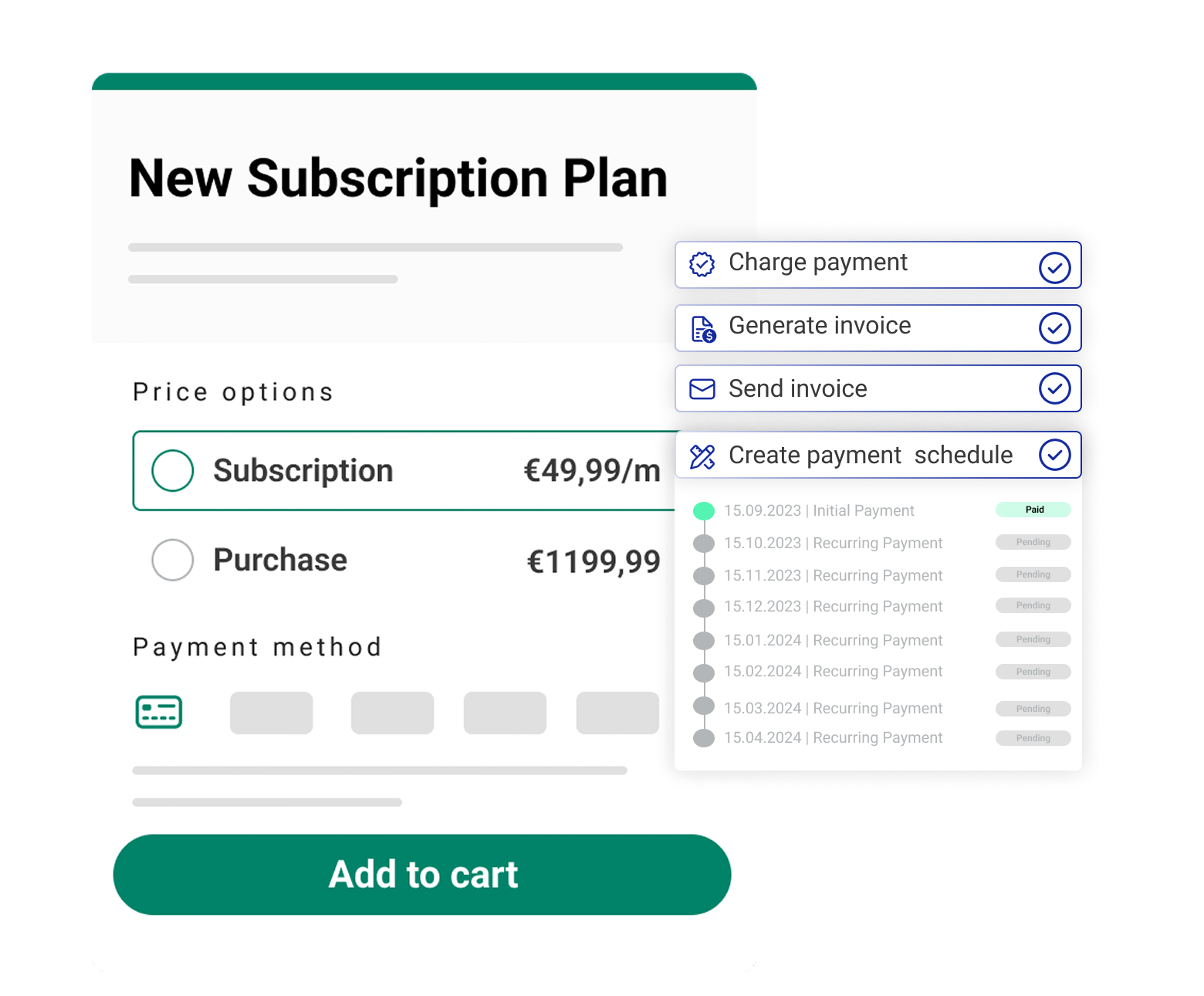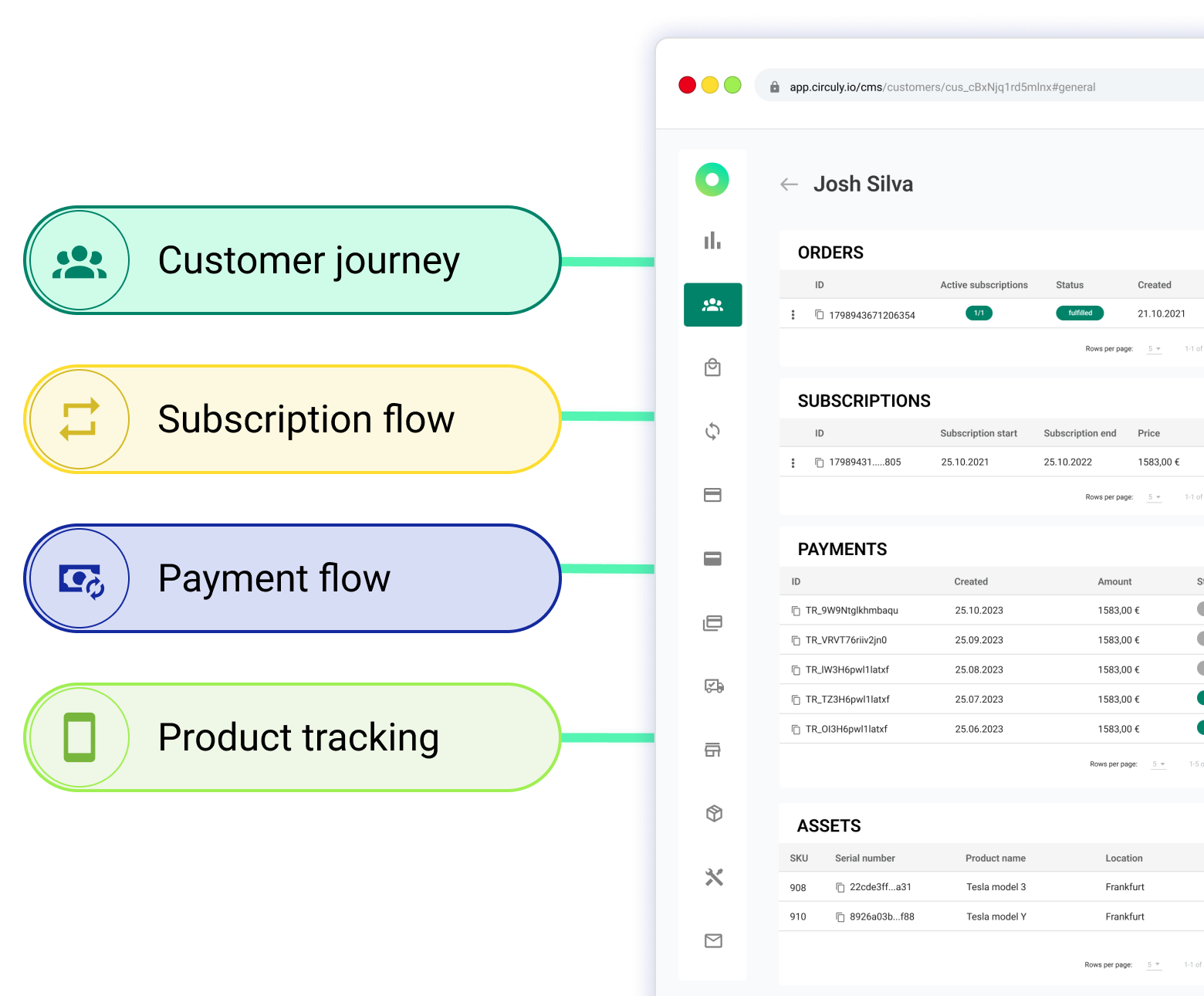Subscription management for eyewear
Launch, manage & scale your subscription business for
Eyewear & Prescription Glasses.

Powering brands in 18 industries, 17 countries, across 5 continents.

.png)











.png)








.png)

.png)





.png)

.png)
.png)
.png)




.png)



.png)
Running product subscriptions is more complex than it should be.
But with circuly that complexity disappers.

Let order to return & everything in between run on auto-pilot.
circuly automates the core and standard subscription operations including follow up operations associated with swaps, buyouts, cancellation, so you don't have to interviene.

Connect all moving parts, in one system.
circuly unifies your entire subscription business in one system and also enhances the tools you already use with clarity and control.
.gif)
Deploy workflows that make sense for you.
With circuly you don’t buy into fixed modules but are free to set up your own custom journey.
Discover circuly — The solution for
Eyewear-as-a-Service
The solution behind the most innovate subscription brands.
Bring on board the tech and
tools you love using.
Put data at the heart of everything to drive real business results.
.png)
"How many products are rented on average per customer?"
.png)
"How many products are currently rented vs. bought out by our customer?"
.png)
"How much has it cost to repair and refurbish this product?"
FAQs about the circuly solution.
Under the subscription model, maintenance, service visits, and warranty coverage can be bundled into the subscription price or treated as add-ons. circuly can track maintenance schedules, service calls, repair logs, and warranty terms per subscriber — so you (and your customer) always know what’s included.
A subscription model for eyewear allows customers to get their glasses through a recurring plan rather than a one-time purchase. Depending on the brand, customers might pay a monthly or yearly fee that covers the product, replacements, and upgrades — for example, updating to a new prescription every year.
In recent years, eyewear companies have been rethinking this approach. Inspired by the “subscription economy,” more brands are experimenting with eyewear-as-a-service.
These models range from rental plans where users can swap out frames, to “try-before-you-buy” home trials, to consumable contact lens subscriptions.
Learn more in this article about eyewear-as-a-service.
Yes, you can set up a buyout option — and it can happen anytime you choose, either at the end of the subscription or during its duration.
When it comes to buyouts, there are several operations that need to happen in the background: calculating the buyout price, charging the outstanding amount, updating the stock, communicating with the customer, and tracking KPIs.
Now, imagine you have thousands of active subscriptions — and at any given moment, any number of customers might want to buy their glasses. Managing this manually is nearly impossible. The typical process would involve customers writing to you, your team calculating and communicating the price, waiting for approval, charging the amount, and then remembering to update every system — a process that could easily take days or even weeks.
With circuly, all of this happens automatically within seconds. The buyout process is fully streamlined — from price calculation to payment, stock updates, and KPI tracking. That’s the kind of experience modern subscribers expect — quick, seamless, and transparent.
Find out more about buyouts in circuly.
Yes — if designed right. Subscriptions can turn occasional customers into predictable, long-term revenue. Instead of selling one pair every few years, brands can create recurring touchpoints: yearly prescription updates, style swaps, or seasonal collections. Many eyewear brands use subscriptions to stabilize cash flow and reduce dependence on one-off campaigns.
Brands like Mister Spex have shared growth numbers after initial launch. Mister Spex shared the following on their LinkedIn account:
- ~10% of store revenue in June and July
- Average order value 3x higher than standard purchases
- 40% of subscribers are first-time customers
- High demand for progressive lenses and prescription sunglasses
See the post by Mister Spex here.
And Synsam shared that they have scaled to ~871,000 subscription customers (mid-2025), with its subscription arm now making up 53% of total sales. In Q1 2025, net sales from spectacles subscriptions grew ~12.5%. In 2024, subscription sales grew ~13.4% YoY.
For eyewear retailers with physical stores, subscriptions can be a powerful extension of the in-store experience — not a replacement for it.
Most customers still prefer getting their eyes tested and frames fitted in person. The store staff can pitch the subscription model and highlights its advantages instead of selling the glasses one time to the customer.
In fact proper training of the sales staff can drive subscription adoption. The customer sees value in post-purchase solutions like eye exams, replacements, and upgrades.
With circuly you can offer flexible payment options such as monthly, quarterly, or annual billing. Payments can be automated through your preferred payment service provider (PSP), and circuly tracks every step — from scheduled charges to successful payments, failures, and even debt collection if needed.
At the end of the subscription term or at the end of the minimum subscription duration you can offer a number of options to your customers. You can configure end-of-term options like renewing the subscription, offering a buyout (purchase at fair market value), or getting the product back through a standard return. circuly lets you automate those transitions and communicate them with the customer, so you don’t have to manually manage each case.
Shop systems, PSPs, and ERPs are all powerful tools — but none of them are built to handle the full complexity of a physical product subscription. A shop system is designed to catalogue products and guide customers through checkout. A PSP exists to process payments and offer multiple payment options. But neither manages the full subscription lifecycle.
A subscription management system like circuly acts as the central layer between these tools. It houses all subscription operations — billing logic, renewals, contract changes, returns, and more — and ensures your existing systems are aligned with subscription logic.
For example: a PSP can charge recurring payments on a fixed schedule, but once the subscription attributes (frequency, price, duration) are set, they often can’t be changed. circuly gives you that flexibility — to pause, swap, extend, or re-price subscriptions — while still using your PSP for what it does best: processing payments.



.png)



















.png)



















.png)

%20(2).png)





